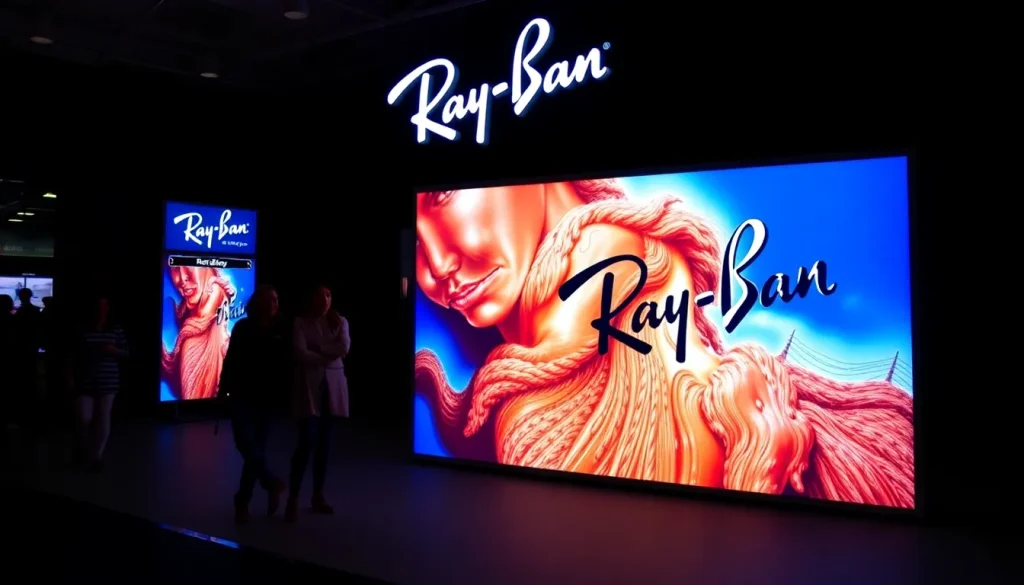Meta explains reasons for Meta Ray-Ban Display failure at launch

In an age where technology is evolving at an unprecedented pace, the introduction of smart glasses has become a focal point for many tech companies. Recently, Meta, formerly known as Facebook, attempted to make a splash with their latest product: the Meta Ray-Ban Display. However, during the presentation, the event turned into a spectacle for all the wrong reasons. Let’s delve into the details behind this mishap and explore what went wrong.
Understanding the Meta Ray-Ban Display
The Meta Ray-Ban Display represents a significant leap in wearable technology, combining traditional eyewear with advanced smart features. These glasses aim to offer users augmented reality experiences, hands-free communication, and interactive capabilities powered by artificial intelligence.
- AI Integration: Users can interact with the glasses using voice commands.
- Augmented Reality: Overlaying digital information onto the real world.
- Camera Functionality: Capturing photos and videos seamlessly.
This ambitious project signifies Meta's commitment to leading the smart glasses market, particularly as they invest heavily in AI and augmented reality technologies.
What happened during the presentation?
During the highly anticipated unveiling, CEO Mark Zuckerberg faced unexpected technical difficulties. The demonstration was intended to showcase the glasses' capabilities in real-time, but it quickly spiraled into a series of embarrassing errors.
- Live AI Interaction: The chef invited to demonstrate the cooking capabilities faced an unresponsive AI.
- WhatsApp Call Failure: Zuckerberg struggled to connect a call using the glasses.
These moments not only overshadowed the product launch but left many wondering about the reliability of the technology itself.
Why the failures were not due to Wi-Fi
Initially, Zuckerberg attributed the failures to Wi-Fi connectivity issues. However, Andrew Bosworth, Meta's CTO, later clarified that the problems were unrelated to the network. The real issues stemmed from a lack of planning and unexpected server overloads.
- Server Overload: Multiple simultaneous requests overwhelmed the development server.
- System Activation Error: A command triggered all glasses in the vicinity, causing a crash.
These revelations indicated that the company might not have adequately prepared for the live demonstration's demands, which is crucial for a tech showcase.
Lessons learned from the demonstration
Despite the blunders, there are several takeaways for both the company and the audience regarding the tech industry and product launches:
- Importance of Testing: Thorough pre-launch testing can prevent live demo failures.
- Contingency Planning: Companies should have backup plans for technical issues during presentations.
- Communication Transparency: Being honest about failures can help maintain user trust.
These lessons resonate particularly well in an industry that thrives on innovation yet is highly susceptible to public scrutiny.
Comparisons with historical tech failures
The Meta Ray-Ban Display presentation has drawn comparisons to other infamous tech launch failures, such as the Windows 98 Blue Screen of Death and the iPhone 4's connectivity issues during its introduction. These events serve as reminders that even the most advanced technologies can falter at the worst possible moment.
- Windows 98: The infamous blue screen during a live demo highlighted the risks of untested software.
- iPhone 4: Steve Jobs faced backlash when the device failed to connect during its launch.
Such examples emphasize that technical glitches during launch events can leave lasting impressions, often overshadowing the product's capabilities.
Future updates and improvements
In light of the recent events, Meta has assured the public that they are addressing the issues that arose during the presentation. Bosworth confirmed that they are implementing fixes to ensure the functionality of the Meta Ray-Ban Display is reliable moving forward.
- Software Updates: Continuous improvements will be made to enhance user experience.
- Server Capacity: Upgrades to server infrastructure to handle higher traffic.
- Testing Protocols: Enhanced testing procedures before future demonstrations.
These steps aim to restore confidence in the product and the company, reinforcing their commitment to innovation and quality.
Looking ahead: The future of smart glasses
The market for smart glasses is evolving, and despite the hiccups faced by Meta, the demand for such devices is growing. As various tech companies explore augmented reality and wearable technologies, consumers can expect to see more advanced features and user-friendly designs in the near future.
- Increased Integration: Deeper integration with smartphones and other smart devices.
- Enhanced Features: Improved camera quality and functionality.
- Better User Interface: Streamlined interactions via AI and voice commands.
The potential of smart glasses remains vast, and as companies learn from their mistakes, the products will only get better.
For a visual recap of the event and its implications, check out this insightful video:




Leave a Reply